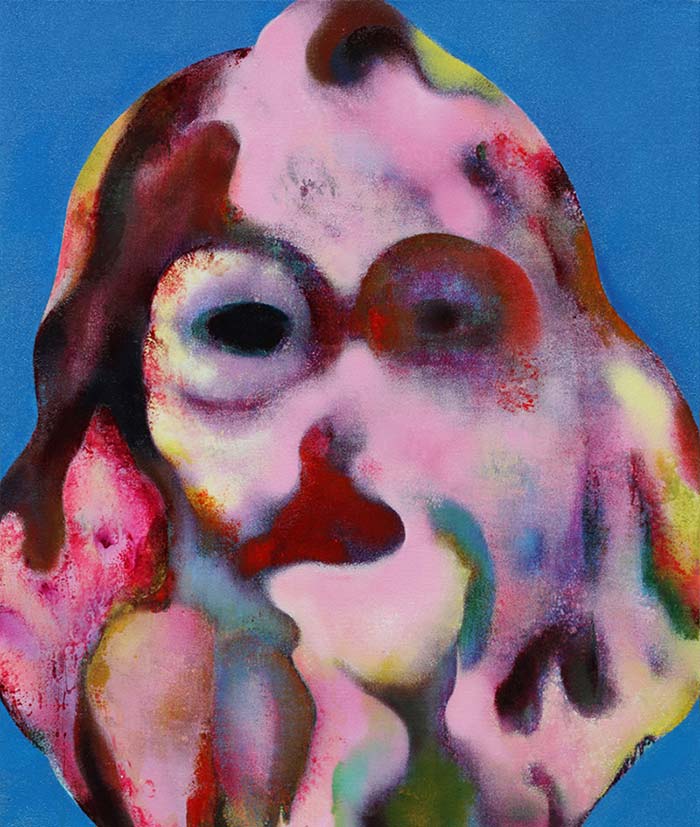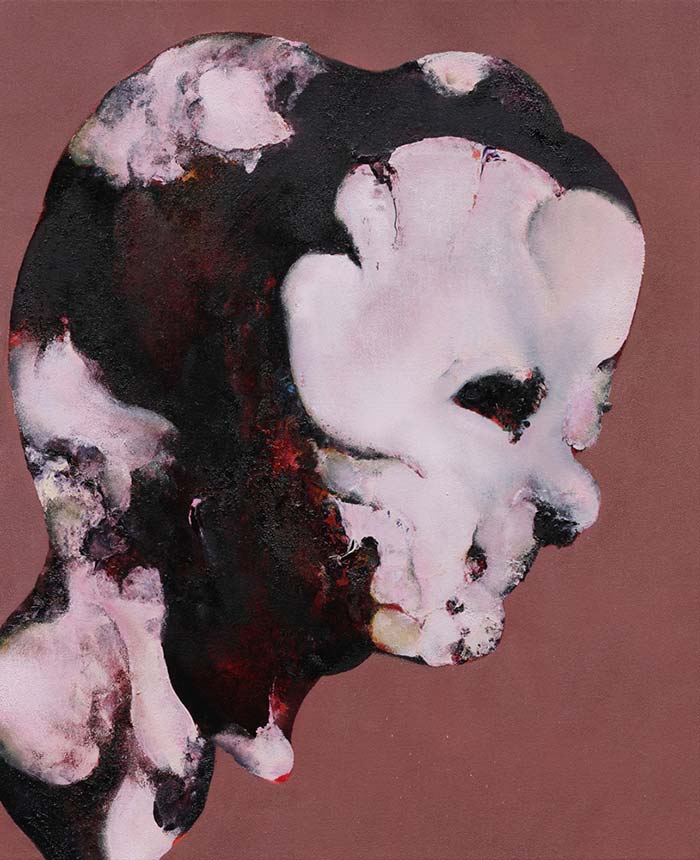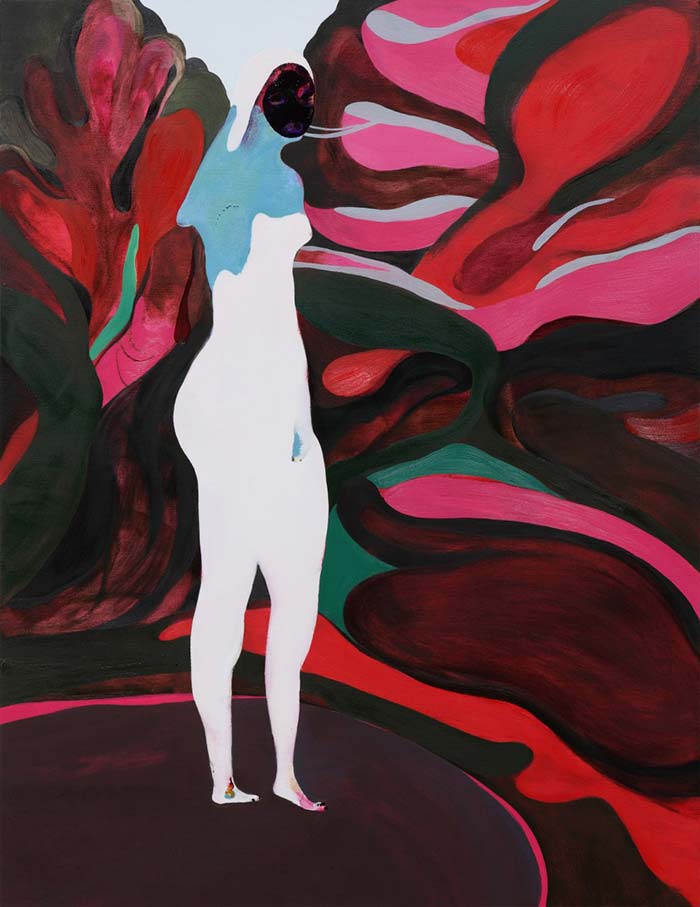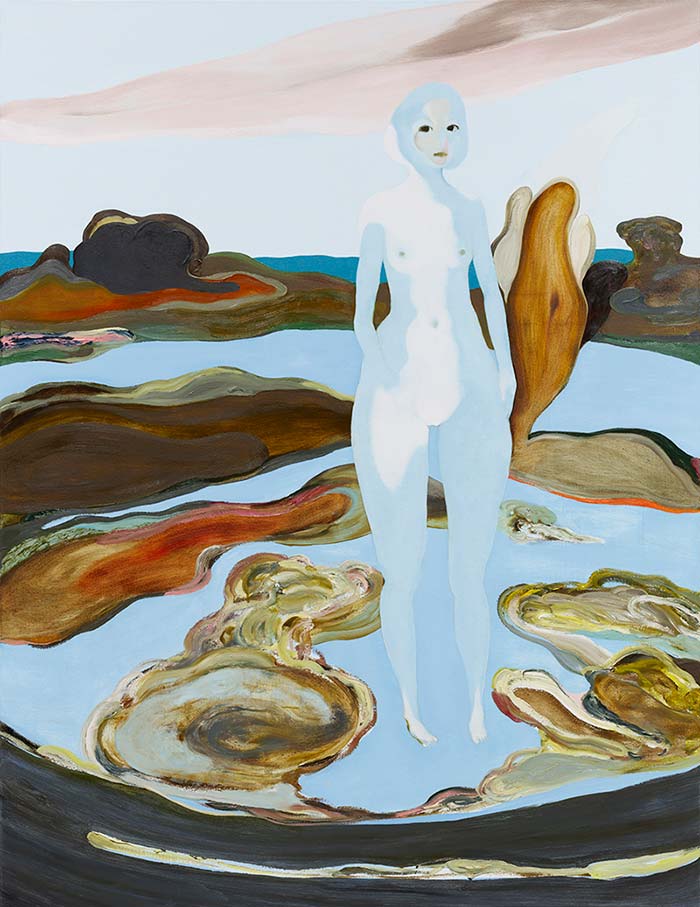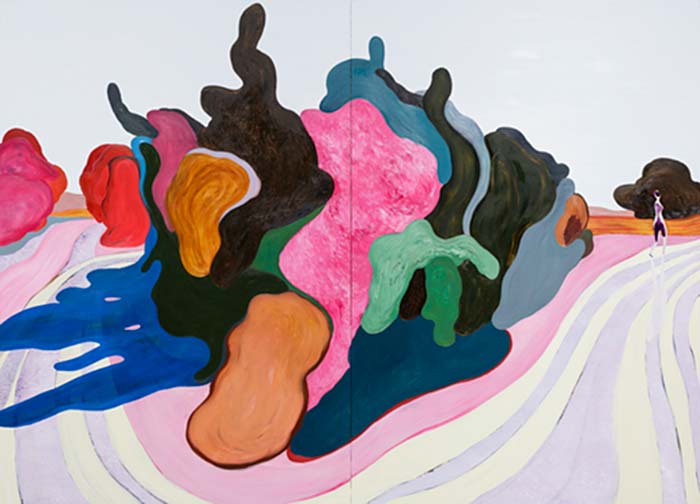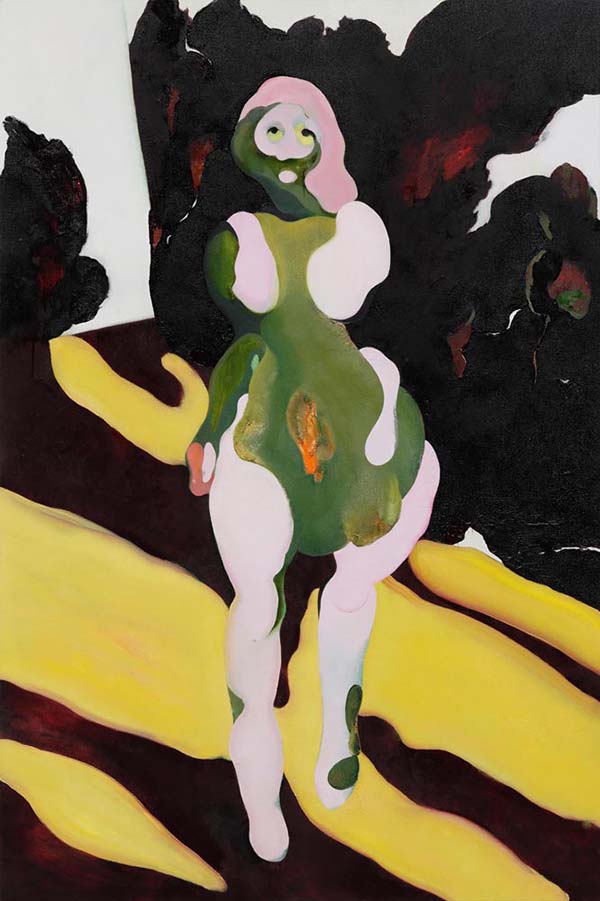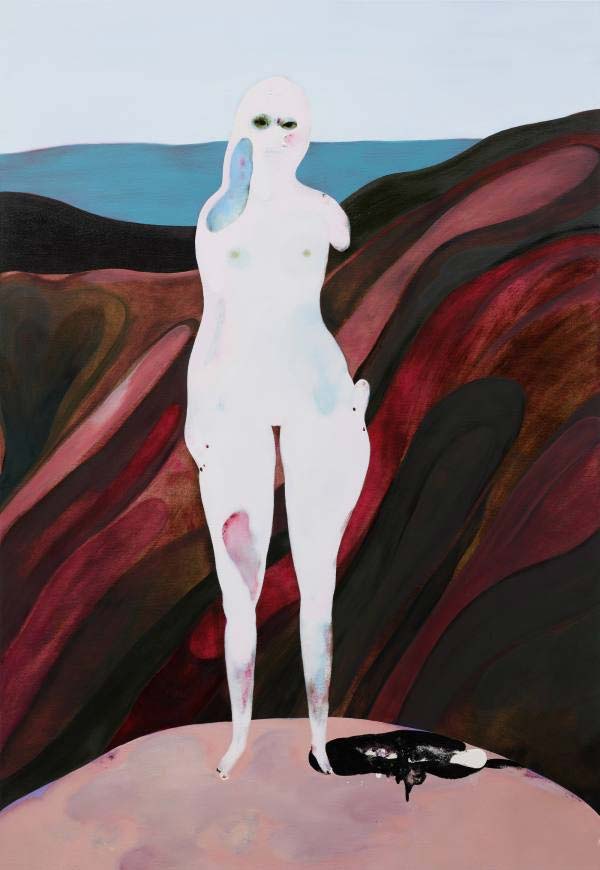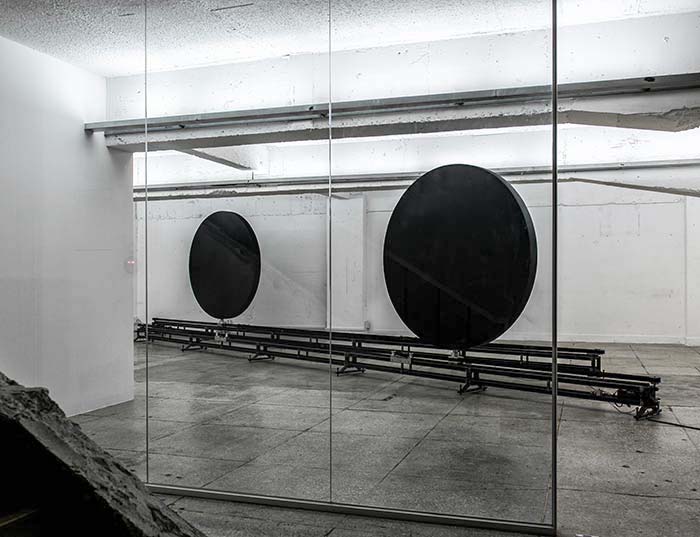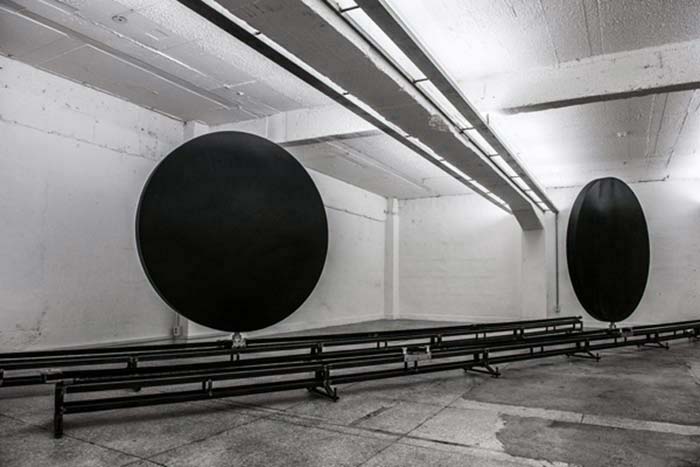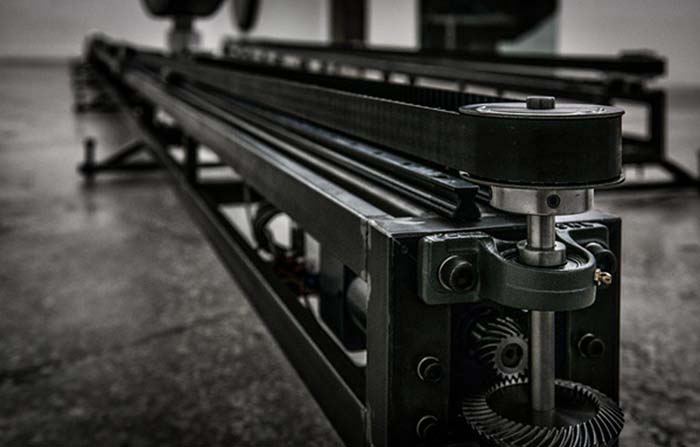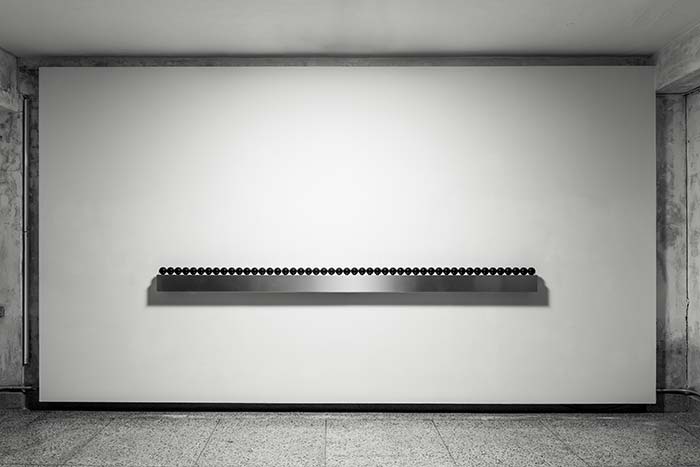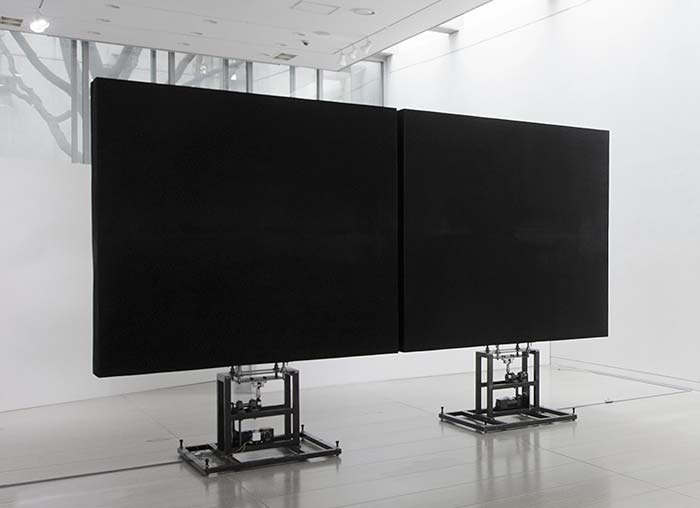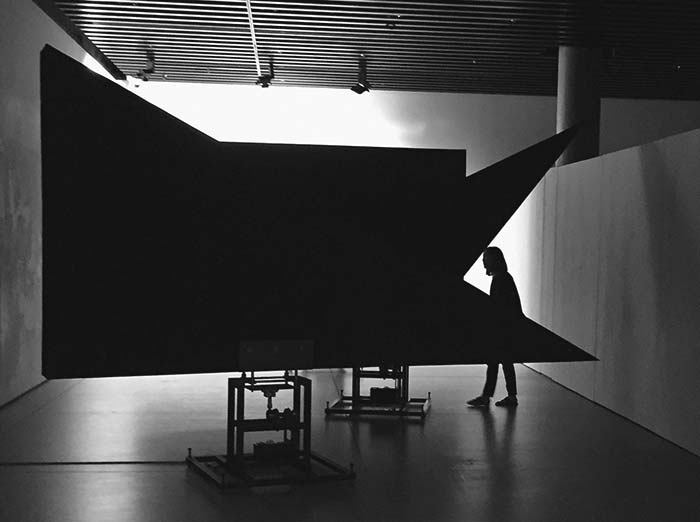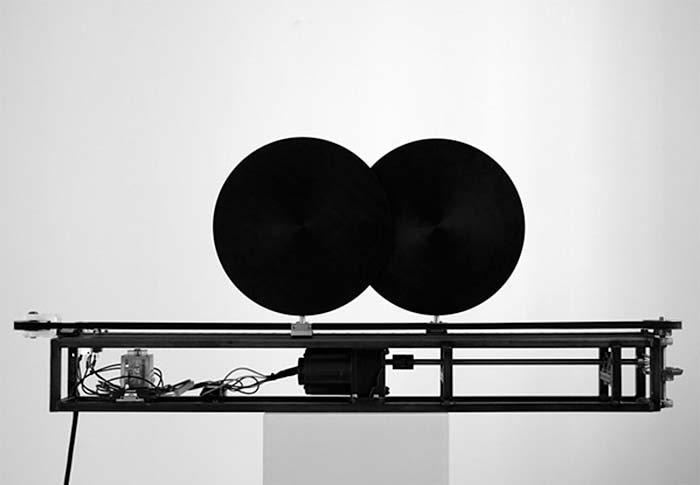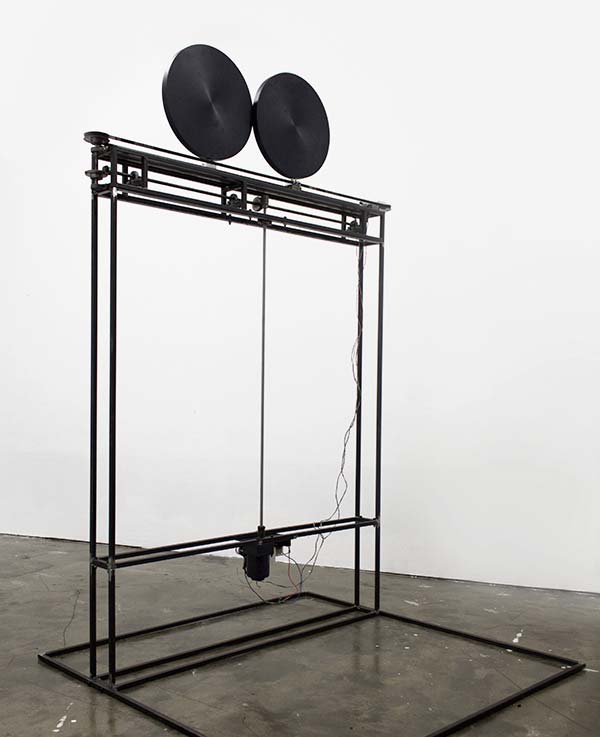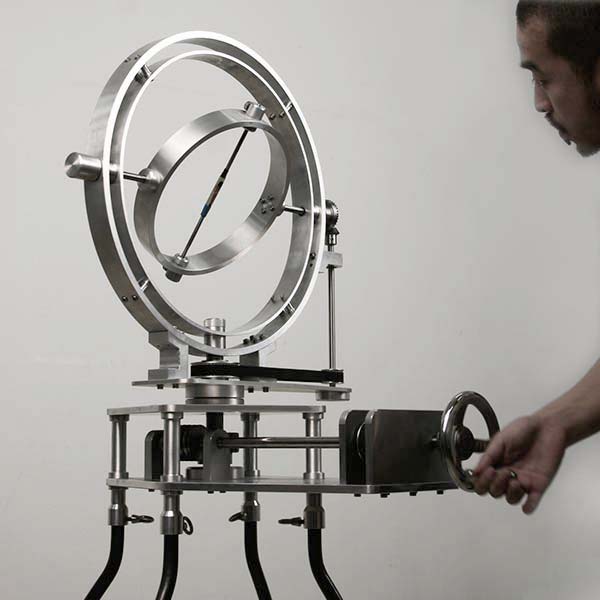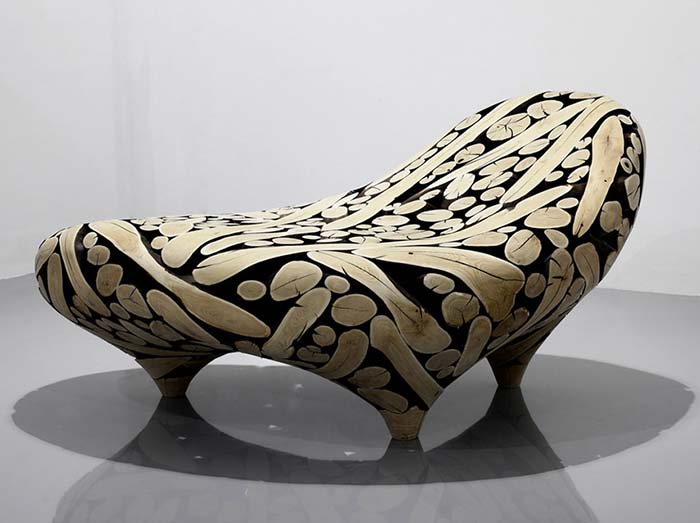
0121-1110=110028, Wood, 230 x 146 x 110 cm, 2010
Some of his wooden sculptures might appear as though the spaces between the trunks have been filled in with a black substance but this is merely due to the effects of charring and shadows. To apply a finishing touch to his wood and nails sculptures, Jaehyo Lee first burns the materials and then sands down the exposed faces to create a high contrasting colours.
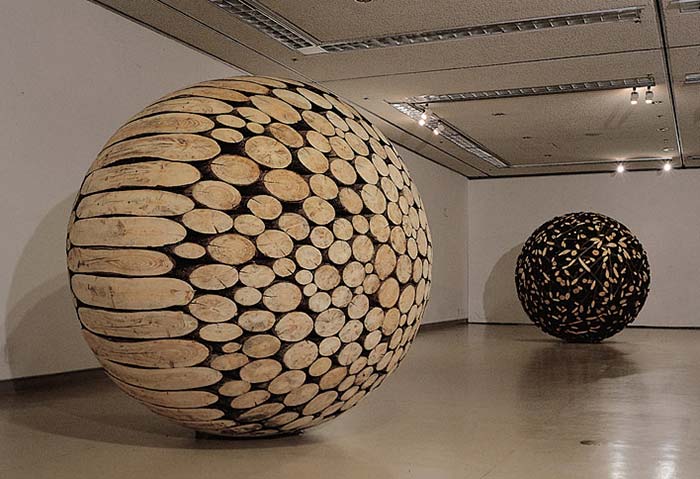
0121-1110=195041, Wood, 200 x 200 x200 cm, 1995
Lee Jae Hyo has been creating wood masterpieces since 1990s. Lee was born in 1965 in Hapchen, Korea. He graduated from Hong-ik University with a Bachelor Degree in Plastic Art. He assembles natural materials such as wood pieces, branches and leaves, and iron nails into three-dimensional works which not only hold elegant forms but also convey a strong contemporary mood.
He has held many solo exhibitions in Korea, Japan, China, the United Kingdom and the United States. He won a number of honors, including Grand Prize of Osaka Triennial (1998), Young Artist of the Day presented by the Ministry of Culture of Korea (1998) and Prize of Excellence in the 2008 Olympic Landscape Sculpture Contest. His works are widely appreciated and adored by art collectors all over Asia, Europe and America.
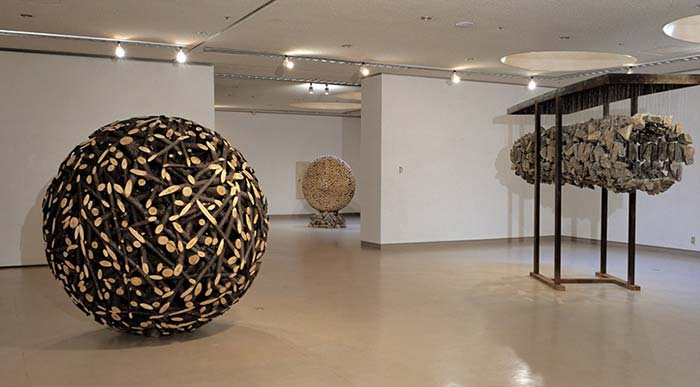
0121-1110=196061, Wood, 200 x 200 x200 cm, 1996
"My art is about the material," says Lee. "Everything begins and ends with the material. I simply want to show the nature of my common raw materials like wood and nails." His creative concern is "to discover a different way to present common materials." Obviously, he has succeeded in this area
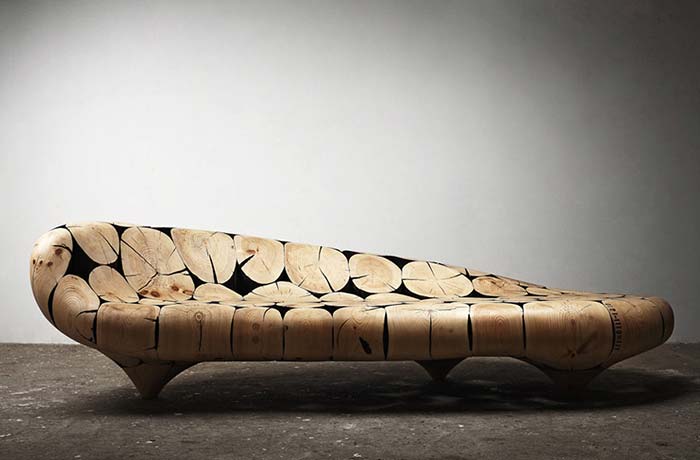
0121-1110=111083, Wood, 246 x 96 x 68 cm, 2011
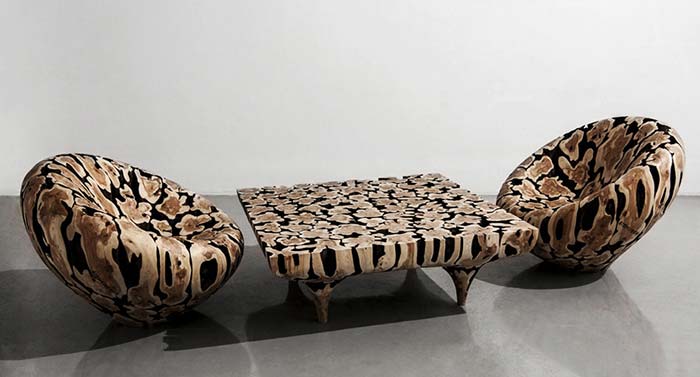
0121-1110=1140810, Wood, 130 x 130 x 47 cm, 104 x 106 x 85 cm & 105 x 102 x 85 cm, 2014
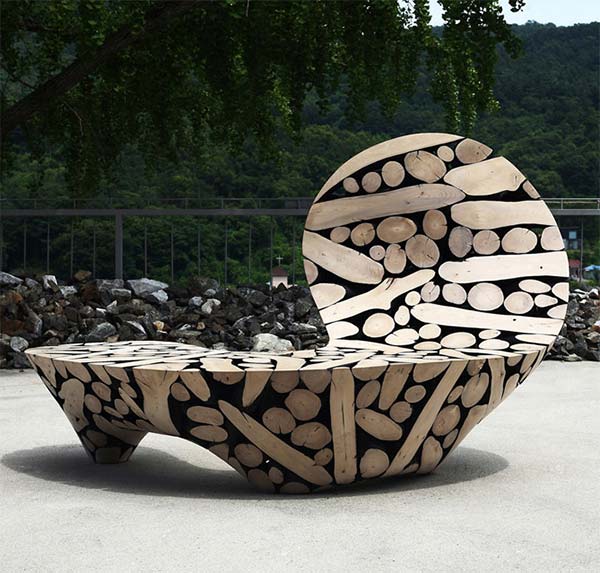
0121-1110=116048, Wood, 200 x 120 x 125 cm, 2016
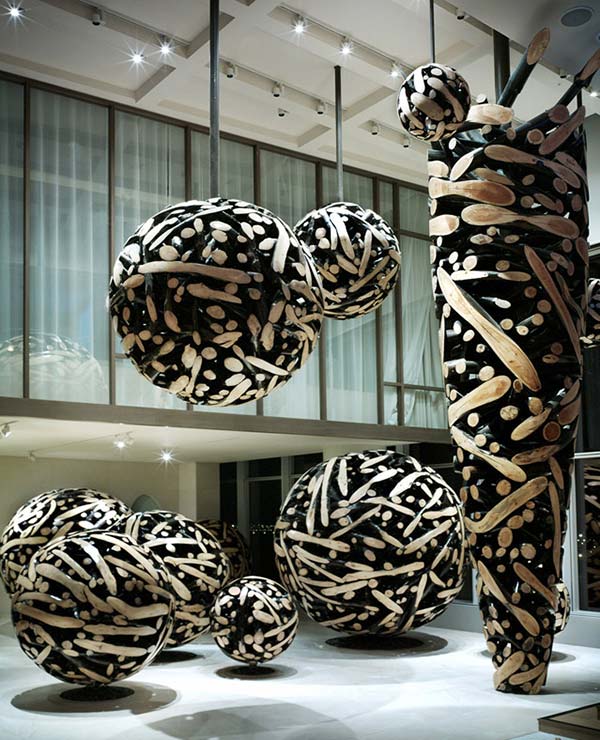
0121-1110=104071, Wood, 70 ~ 240 cm, 15 pieces & 120 x 120 x 520 cm, 2004
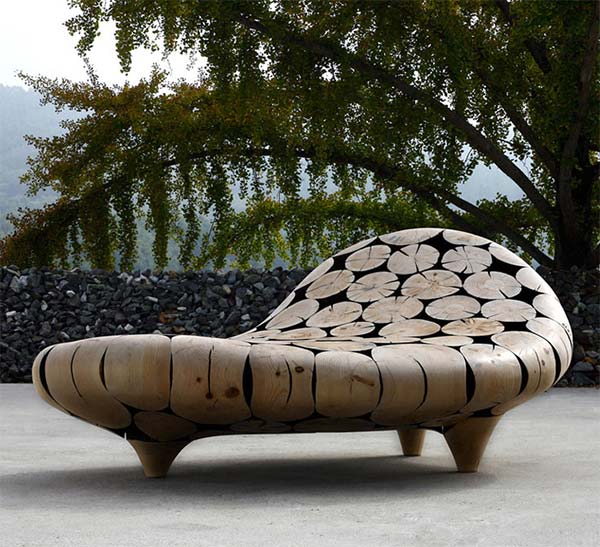
0121-1110=110092, Wood, 208 x 147 x 102 cm, 2010
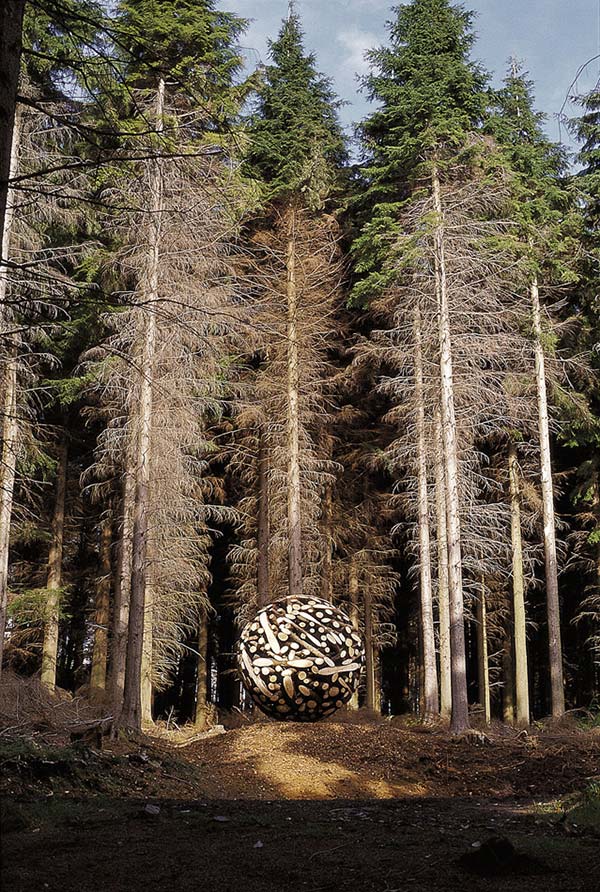
0121-1110=102101, Wood, 350 x 350 x 350 cm, 2002
“I want to express the wood’s natural characteristics, without adding my intentions.”
“Though I may take my time to create my pieces, though I may be an artist behind the times, this is who I am. … I’m just doing the work that fits me well, thus here I am still hammering away in this digital age.”
“The globe is the simplest form that demonstrates the wood’s original energy; no corners, no angles, and the same shape from whichever side you look at it. I like to make the most out of the material’s inherent feeling.”
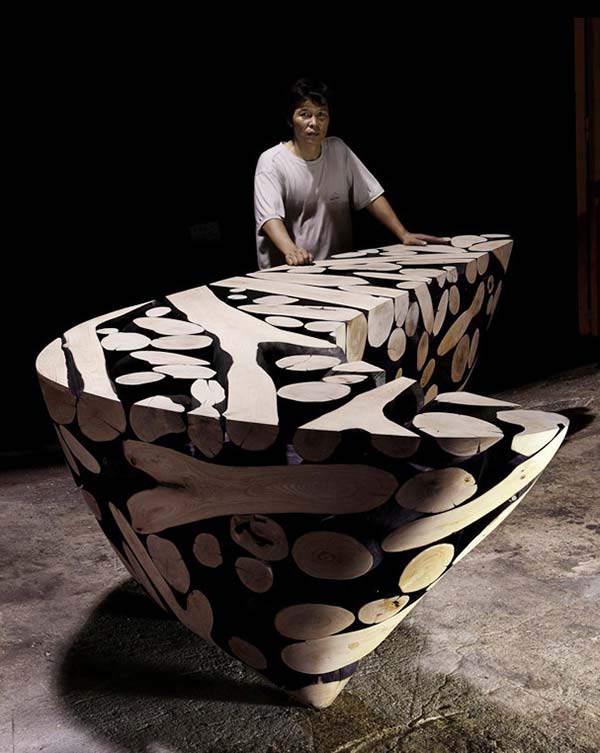
0121-1110=107077, Wood, 350 x 170 x 90 cm, 2007
Working with wood and metal, Jaehyo Lee produces immaculately formed, intricate sculptures that reveal a mastery of his materials and a winking, sophisticated wit. Lee eschews traditional distinctions between the fine and applied arts and makes both functional and functionless works, presenting benches, stools, and tables alongside abstract, biomorphic forms.
Burnt-black wood often serves as the sculptural ground into which Lee embeds discs of fresh wood or bent steel bolts and nails. His wood-on-wood combinations read as playful meditations on the multifaceted nature of wood itself, while the nails that often cover his wooden surfaces seem transformed into worms or spermatozoa—recalling a slithering, energetic galaxy of organisms.
Korean, b. 1965, Hapcheon, South Korea
Jaehyo Lee
